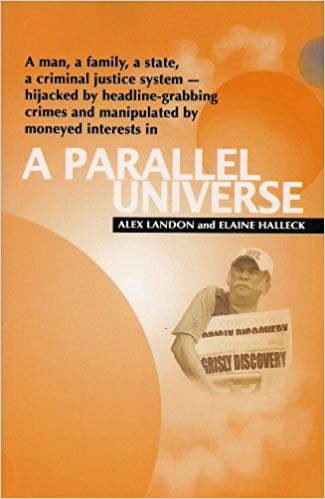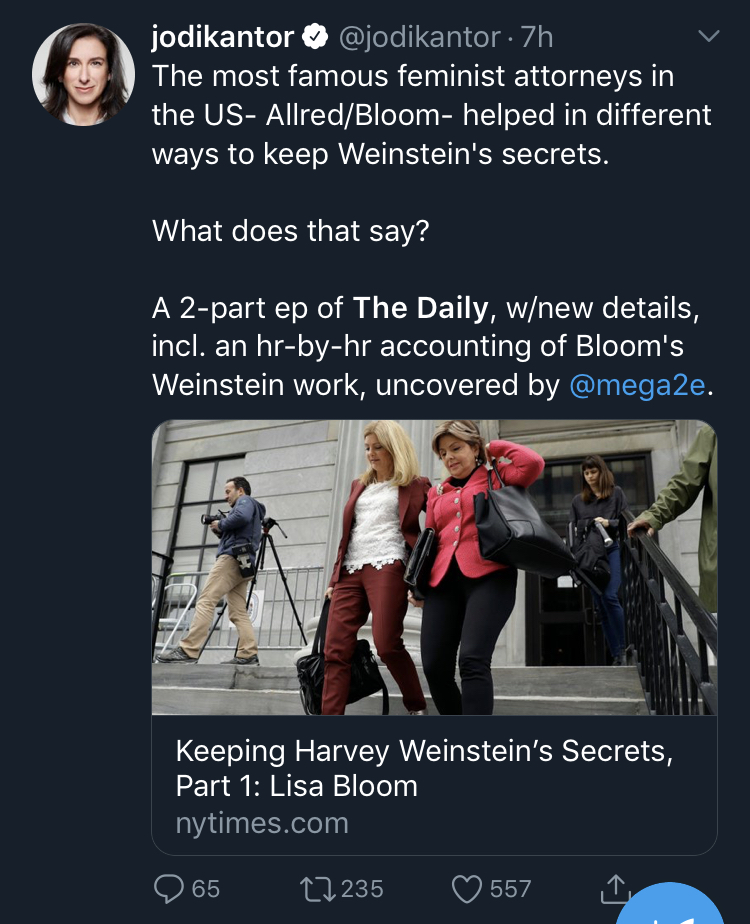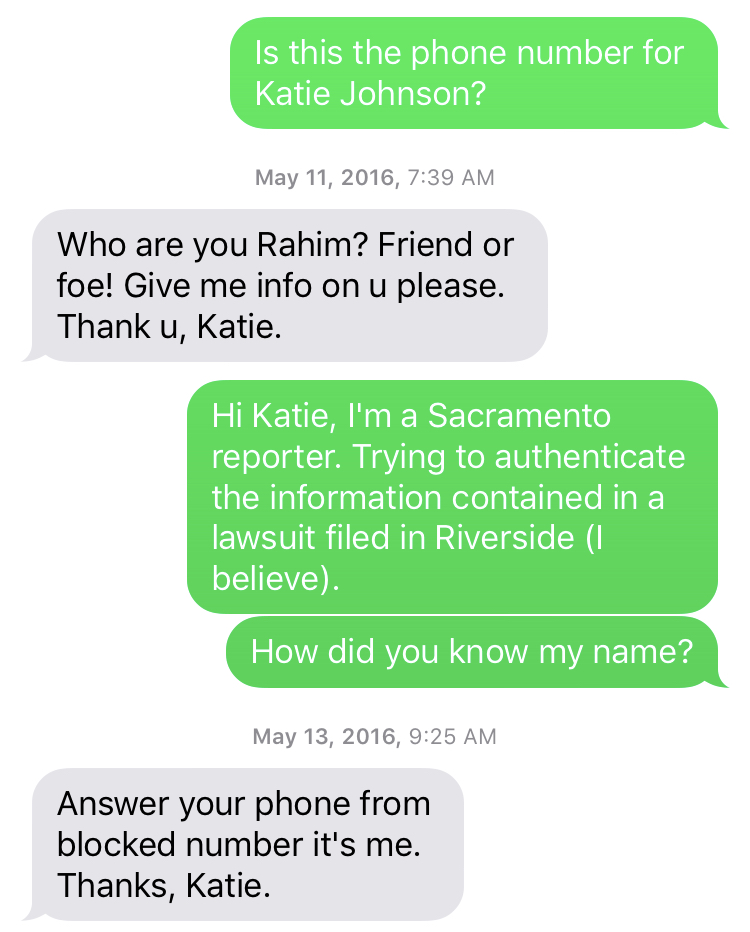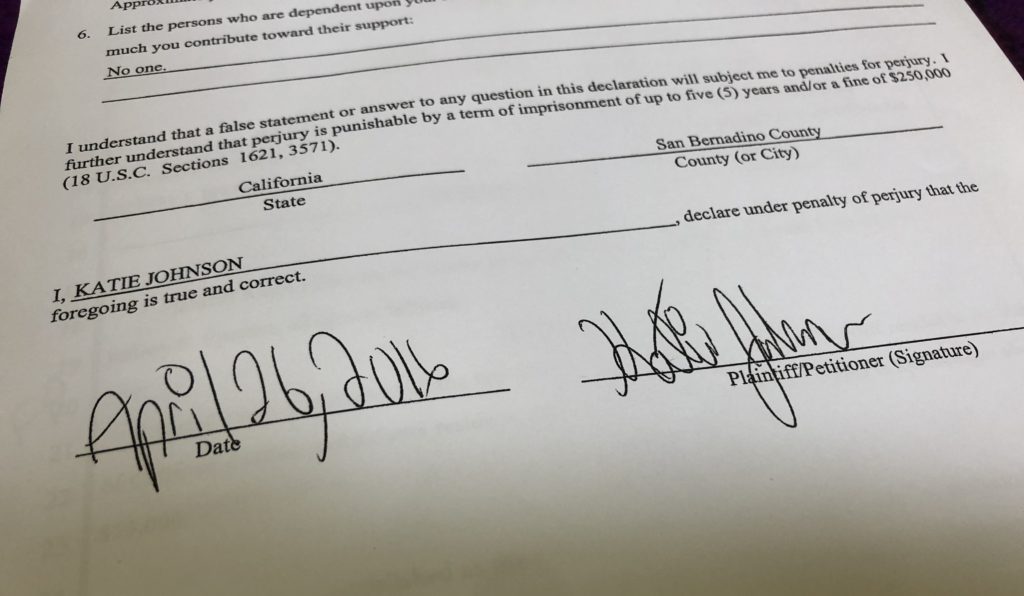An unbelievable news tip. A dead-of-night phone call. And a journey to the edge of an unknowable political scandal.
It didn’t start with a phone call, but I thought it ended with one.
A 2 a.m. tremor on my nightstand. I reached for the phone already knowing who was on the other end and what they were going to say. Your mother’s dead and you weren’t there. I thumb-dragged the cursor and tried to say, “Dad.” But it wasn’t him. The voice I recognized. Its master I never knew.
“You still want to talk to Katie Johnson?”
It had been months since I’d heard that name.
“Katie Johnson” was the plaintiff in a federal lawsuit filed in April 2016 in Southern California. According to her claim, Johnson was an adolescent when she drifted into Jeffrey Epstein’s orbit. You may have heard of him. The devil sure has.
Epstein was the obscenely wealthy, insidiously connected financier who allegedly procured and sexually assaulted dozens of girls, with little more than a legal wrist-slap. But his victims grew up and, eventually, made us listen. Epstein was in a New York jail cell on federal child sex trafficking charges when he died of a mysteriously broken neck last month, igniting conspiracy theories that one of high society’s most untouchable was killed to keep him from implicating members of a powerful inner circle of pedophiles.

Which brings us back to Johnson, who claimed that she, too, had been lured to Epstein’s New York penthouse in 1994 when she was 13, only to be swallowed into a nightmarish underworld of sexual enslavement. Her chief tormentor for the next three months, she alleged, was a real estate mogul named Donald Trump.
Those allegations haven’t been substantiated.
One week after Johnson’s lawsuit was filed, a judge for the U.S. Central District Court of California dismissed it for failing to cite an actionable civil rights claim. More troubling to those of us in the journalism field, the only identifying information available for Johnson proved inconclusive—mail to her supposed Twentynine Palms address returned, calls to her supposed phone number disconnected. But text messages sneaked through. At least mine did.
I exchanged a few with a person claiming to be Johnson. I was told to answer a phone call from a blocked number. When I did, I heard a man’s voice, offering the improbable—an opportunity to stop Trump from becoming president.
Bottomless mysteries are getting to be a thing in post-truth America, perplexing even the media literate. But there was something really off-putting about this guy.
I hung up.
Six months later, in October 2016, he called again.
“You still want to talk to Katie Johnson?”
The voice more than the question burned through me. It was thick and duplicitous. It was sucking and sickeningly familiar. It was these things at this wrong hour to a son waiting for his mother to die.
I hung up.
We were just days from Trump’s inevitable defeat, and I’d had enough of frauds.
Three years later, my mom is gone, Trump sits in the White House and Epstein’s corpse refuses to confess or atone. And I want to know who was behind it all, and whether—in this dark, unenlightened age—something can be both true and false at the same time.
Grill the messenger
I restart my search not with Johnson, but with the person who began it: Elaine Halleck. She’s the one who sent a May 9, 2016 email under the subject line “Murky CA lawsuit against Trump.” This is how I fell down the rabbit hole.
Halleck’s email said she was a former SN&R contributor working a news desk in Guadalajara, Mexico. It was unclear to me at the time why a border-adjacent reporter thought a hyper-local alternative weekly was positioned to blow open a story with national implications. In the weeks prior, our covers featured stories about a local contestant for The Voice, Bike Month and the lack of public restrooms in the city. The New York Times we were not.
Before phoning Halleck for a trip down memory lane, I skim our email exchanges, both to refresh my memory and for any overlooked clues. I learn a few things that could be significant or meaningless. It’s a bit like waving a flashlight in a dark forest. You get glimpses of what’s there, but never the whole picture.
In May 2016, Halleck said she had written a couple of pieces for SN&R with Alex Landon, a San Diego attorney and law professor. While I’m able to find two op-eds credited to Landon in our online archives, I don’t find Halleck’s name anywhere. But interestingly, Landon’s commentaries, from 2003 and 2006, contended that California was crafting laws against sexual predators that went too far.
This feels pertinent somehow. While I can’t find Halleck on our outdated Geocities webpage, Amazon shows that she and Landon collaborated on a 2011 book it describes as an exploration of the “designer laws” that Landon condemned in his columns. The book does this, its synopsis says, by mixing fact and fiction. It’s titled A Parallel Universe.
How fitting. I feel as if I’m in one.
I ask myself: Could Landon and Halleck have fabricated a salacious lawsuit and/or pressed for media coverage to somehow call attention to sex crime laws they find problematic?
I soon discover how preposterous the question is.

Today, Halleck is still working for the Guadalajara Reporter, a community newspaper geared toward American and Canadian expatriates. She says she ghost-wrote Landon’s columns (which is why I couldn’t find her byline), and is updating the book she coauthored with him. She says the book scrutinizes the unintended consequences of reactionary sex-offender legislation, not true monsters like Epstein.
Halleck tells me two people at her church brought Johnson’s lawsuit to her attention. Halleck did a little online digging, finding speculative stories by “sleazy British newspapers” fixated on Epstein’s relationship with Prince Andrew, as well as the lawsuit, which had already been dismissed. She wasn’t sure what to make of it all, but hoped someone else could.
“I just thought it was weird that no one really paid that much attention to it,” she says.
I tell Halleck why I didn’t write about the lawsuit at the time, that it all felt too unverifiable. Other, stronger allegations against Trump were already competing for voters’ attention. How his casinos bled Atlantic City dry. How he groped women and peeped on his Miss Teen USA contestants. Inaccurately reporting one claim could heap discredit on those telling the truth about him.
Not that any of it ultimately mattered.
When my mom died, I remember thinking she just missed America electing its first female president. Instead, Teflon Don overcame all manner of boorish indiscretions, siphoning enough electoral votes to defeat the popular will.
“I guess society had changed a lot by the time Trump came along,” Halleck reflects. “All these outrageous things come out about him, and none of it affected his chance of being president.”
And “Katie Johnson,” where did she fall into all of this? Was she a fraud, perpetrated by the left to smear Trump with Epstein’s heinous crimes—or a “deep fake” ploy of the right to discredit the media? And all this time later, why do I still care?
The Guterman tangent
People other than me have supposedly communicated with Katie Johnson, including someone from the venerable (cough) Daily Mail and celebrity victim rights’ attorney Lisa Bloom, whose reputation has been severely tarnished by her work for Harvey Weinstein. But several videos purporting to show Johnson telling a piece of her story—in a deposition, to a therapist—have been scraped from the internet.

It’s one of those scrubbed videos, on a pop-up-cluttered, bloggy-looking website called Democratic Underground, that points me to Jeffrey Guterman. The video, posted July 10, is advertised thusly: “Katie Johnson video re: grooming by Epstein and rape by Trump …” When I click on the embedded box, I get a darkened screen with a white-lettered letdown:

Of course it doesn’t. The poster credits the video to Guterman, a Trump-bashing Florida personality with a rabid Twitter thread. We’re talking more than 200,000 tweets in less than two months. We’re talking archival photos, John F. Kennedy audio clips, retweeted Trump stories, shaky hand-held Periscope videos and racier material that’s attracted the eyes of both the Secret Service and Twitter’s code-of-conduct enforcers.
I scroll through it all, back in time through thousands of posts, including a lewd cartoon of Trump in a sweaty masturbation pose, only to find that Guterman’s Twitter account starts at July 14, four days after the Katie Johnson video was supposedly uploaded.
Damn you Guterman!
I waste more time perusing Guterman’s extensive vlog, including one YouTube video that’s just him on his laptop listening to cable news for a half hour, shirtless for some of it, pantsless for all of it.
Somewhere around minute 14, I conclude he’s not going to be my Deep Throat.

While Guterman is a bust, a colleague sends me a still-working YouTube link to a supposed Katie Johnson interview, and—lo and behold—I feel no closer to anything resembling truth.
This particular video was just uploaded on July 15, accruing almost 58,000 views since then. Behind disclaimer text that says the video is “Property of Justice for Katie legal fund & trust,” a woman, her face blurred, speaks to someone off camera for 29 minutes. She sits beside a small side table in what appears to be a hotel room, in front of a wide, heavy curtain that usually blocks a third-story view of a parking garage or something. It looks like she’s wearing one of those shiny costume party wigs.
At one point, referring to alleged threats Trump made to another girl, the woman says, “You didn’t really know if it was true.”
I know what she means.

The conversation
Katie Johnson of Twentynine Palms has a Facebook profile. It says she’s from Laguna Hills and works in child development. The photos are of a young African-American woman with nearly 500 friends, not the worn-thin white woman from the Daily Mail’s site. Does that mean anything? I honestly can’t tell. I send her a friend request and a message.
“Hi Katie, I’m a reporter up in Sacramento, CA. This might be a weird question, but are you the Katie Johnson who filed a lawsuit a few years ago against Jeffrey Epstein and Donald Trump?”
Two days later, she breaks the news: She is not the plaintiff I’m looking for.
I believe her, and not just because not doing so would mean she was hiding in plain sight on a website with 2.4 billion users. Still, I need to be sure. I ask her to bear with me as I belabor the point: Was she 13 in 1994? Did she ever meet Trump? Did she ever meet Epstein? Did he offer to help her with a modeling career?
It’s a shutout. She responds with “no’s” across the board. She wasn’t even born the year that Epstein supposedly snared a girl by her name into his pedophilia ring.
“And I’m pretty sure the girl your looking for is white,” she adds for good measure. “Your not the first to ask me.”
I’d wondered about that. Turns out other reporters braced her. I ask if anyone associated with politics ever came sniffing. She doesn’t respond.

Feeling like I’m running out of ways to nip around the edges, I do what I’ve been putting off. I call the number I have for Johnson. An atonal jingle cues up the following automated message from a nice robot lady: “The person you are trying to reach is not accepting calls at this time. Please try your call again later.”
I do with similar results. I punch Johnson’s number into a new text and stumble across the old ones. They remind me how weird this whole thing was from the start—how, even then, I questioned whether the lawsuit’s author was who she appeared to be on paper: an unemployed model with $276 to her name, acting as her own attorney against one of this nation’s most litigious developers. A woman with a swooping, unhurried, back-leaning, cursive signature, who dotted her “i’s” with circles that almost looked like thought bubbles.
Flashback to May 10, 2016. I text: “Is this the phone number for Katie Johnson?”
I receive a green bubble before 8 the next morning: “Who are you Rahim? Friend or foe! Give me info on u please. Thank you, Katie.”
I was surprised by the response, not just because the tone seemed at odds with the seriousness of her claim—I reminded myself sexual assault survivors are often unfairly disbelieved because they don’t “behave” how someone thinks they should—but because I had never given her my name.

On May 13, 2016, I got a call from a blocked number. I didn’t answer it. Johnson texted, telling me to answer the next call from that blocked number because “it’s me.”
We connected the following morning just before 10. I heard not a woman’s voice but a man’s, refusing to give his name and purporting to speak for Johnson. For as little as I knew about him, I knew enough to distrust him. I told him I would only speak with Johnson.
“I’m trying to figure out if she’s a real person,” I said.
“Oh, she’s real,” the voice said.
I scolded him, but I don’t remember what I said. And then I hung up. The call lasted less than nine minutes.
I then texted Johnson’s number: “Hey Katie, this is Raheem. It’s totally OK if you’re not ready to talk to me, but don’t have that weird guy call me and waste my time again. Good luck with everything.”
“Katie” never responded.
I waited 40 months to send a follow-up. Epstein’s death reopened the mystery for me—or was it a wound?
Finding ‘Katie Johnson’
On the same day I sent the other “Katie Johnson” a Facebook friend request, I reached out to a private investigator for help—three, in fact. Rob Hessee was the only one to volunteer his services.
The retired Placer County sheriff’s sergeant and gang detective is now a licensed private investigator. And he comes up big time. Besides confirming that Facebook Katie Johnson is not lawsuit Katie Johnson, he runs the only solid leads I have—the phone number and the supposed home address, which turns up a 2012 Google Maps image of a white-shack house with brick-red trim on a flat, arid stretch of nowhere called Twentynine Palms.
Regarding the latter, Hessee gets 28 hits. But only five people were associated to the address at the time the lawsuit was filed, including a man who died 13 years ago. Of those five names, none link back to the phone number, which is my best lead, as I had actually corresponded with someone on the other end.
When I personally ran the phone number through Google, I got two names. Tantalizingly, one possible owner worked as an administrative assistant for the Colorado Bureau of Investigation. Her job? To provide clerical support within the bureau’s forensic science laboratory. What were the odds that my would-be puppet master learned her subterfuge skills watching lab techs crack encrypted cellphones and analyze hard drives?
But would this 59-year-old state worker—who, according to her Facebook profile, enjoys gardening, her grandson and selfies featuring the left side of her face—really jeopardize her pension by doctoring a tawdry rape cult lawsuit?
I mean, anything’s possible. I assume my Facebook messages are diverted into a digital landfill and spend some time configuring possible work email addresses. It’s not too hard. Looking up the CBI’s media contact, I see the addressee pattern is a simple chain: FirstName.LastName@state.co.us.
The problem is my person’s last name is hyphenated and those aren’t always translated verbatim. So I cast my net wide. I fabricate five possible email addresses and blind copy them all the same message I sent through Facebook.
Four bounce back. The fifth hasn’t responded.
But something tells me this Colorado secretary didn’t file a lawsuit in Southern California. (Then again, what a good way to divert suspicion.) Which brings me to my second phone number hit and back to Hessee, who independently comes up with the same name.
We’ll call her “Bethany.”

Bethany is a 29-year-old esthetician living in Riverside County. According to PeopleFinder, she’s a Christian and a registered Republican. According to a criminal background check, she was convicted of possessing methamphetamine almost a decade ago, with a couple of traffic infractions on either side of that.
Her husband is tall and rawboned, with a light-bulb-shaped head and heavy tattoo ink crawling up his long neck.
If someone hoaxed the lawsuit as a stunt to blow up in the media’s face and discredit all of Trump’s other accusers, could it have been them? Could Bethany’s husband be the nameless man who tried to get me to bite?
Critically, Hessee is able to determine that the phone number was registered to Bethany between July 23, 2011 and June 6, 2019. That means the number belonged to her during the time I received texts from it.
I ask Hessee if he can think of any reason these two shouldn’t be my prime suspects. Spoofing phone calls from other people’s phone numbers has become a relatively easy thing to do these days. But, back in the summer of 2016, was it possible to forge text messages from other people’s numbers? Hessee is doubtful.
“I would think the phone number would be the most likely to be factual for contact,” he writes in an email.
Which means Bethany could be Katie Johnson. And her husband could be the nameless man.
So now what? Place a call from a blocked number like they engineered? Maybe in the dead of night. Maybe during a listless sleep, while they’re waiting for word of a loved one’s demise.
But that isn’t journalism. It’s vendetta.
He called once more, the nameless man, in October 2016. After I clawed through a shallow grave of sleep and hung up on him. A moment later, the phone groaned again. I waited until it stopped. He left a message. I no longer remember his exact words. But the same voice, husky and solicitous, left a brief rejoinder, a juvenile tease. I recall it started with, “Oohhh, guess Raheem …”
My memory aborted the rest. I deleted the message. I waited for my mom to die, for the call I dreaded all my life: Come now. It’s happening. It arrived on Oct. 22, 2016.
A couple weeks later, Trump was elected president. At the time, it felt like he broke the last promise I ever made to her. As she rasped and shook into the void, I squeezed her hand and told her we’d be all right.
Maybe she would find this country unrecognizable today, its people worn down to the coarse edges of fear and suspicion, quick to blame and so afraid to look inward. Every clumsy expression an excuse for revenge, every stranger an enemy. Maybe she wouldn’t recognize this country, but had I changed, too?
I return to Bethany’s Facebook page and weigh the value of a curated life. She’s married with two children. She and her husband look happy. They’ve been together a while. A 2012 photo shows them kissing a newborn girl. Three months later, they walk an aisle hand-in-hand under an overcast sky. Four years later, a son is born.
I don’t know them. And I may never know who called on that desolate October night. But I know who I am. I slide my phone away. Good luck, Katie Johnson. Whoever you are.






Be the first to comment on "Epstein, Trump and … SN&R?"